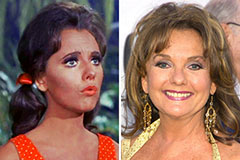Discovering Advanced Tools and Approaches for Accurate Welding Inspection
In the world of welding assessment, the search of precision and reliability is extremely important, stimulating the development of advanced tools and approaches. Laser scanning advancements and automated evaluation systems, equipped with fabricated knowledge, are redefining the landscape by minimizing human error and boosting safety actions.
Ultrasonic Examining Innovations
Ultrasonic testing innovations regularly stand for the center of developments in welding inspection technologies. These innovations have actually considerably enhanced the ability to find and examine interruptions within bonded frameworks, making certain improved integrity and safety and security.

Furthermore, innovations in software program algorithms for data evaluation have actually enhanced the precision of issue discovery and sizing. Automated ultrasonic testing systems currently offer high-resolution imaging, enabling comprehensive analyses of weld high quality. These systems are typically integrated with sophisticated visualization devices, which promote the interpretation of results.
Radiographic Inspection Techniques
While ultrasonic screening innovations have established a high criterion in non-destructive evaluation, radiographic assessment techniques remain to play an integral role in welding assessment by providing special understandings right into material stability. Radiographic testing (RT) utilizes using X-rays or gamma rays to pass through products, developing a radiograph that visually represents the interior structure of a weld. This imaging ability is vital for discovering subsurface flaws such as porosity, incorporations, and splits that may not be visible with surface evaluations.
The procedure includes putting a radiation source on one side of the weld and a detector on the opposite side. Variations in material thickness and thickness influence the depletion of the rays, generating a different picture that specifically defines problems. RT is especially helpful for evaluating thick areas and complicated geometries where various other techniques may fall brief.
Regardless of its performance, radiographic assessment should be conducted with rigorous adherence to safety and security methods as a result of the hazardous nature of ionizing radiation. Additionally, the analysis of radiographs requires skilled employees, as the top quality of the analysis directly impacts the integrity of the evaluation. Ongoing improvements in digital radiography are enhancing picture clarity and interpretation effectiveness, reinforcing RT's essential function in ensuring weld top quality.
Laser Scanning Advancements
Accepting laser scanning technology in welding inspection has transformed the analysis of weld top quality and integrity. Unlike conventional evaluation methods, laser scanning gives quick information procurement, considerably improving the efficiency and accuracy of weld assessments.
Laser scanning breakthroughs have actually caused substantial improvements in discovering and defining surface area problems such as porosity, absence of combination, and undercuts. The high-resolution data allows inspectors to execute extensive analyses, ensuring that welds meet strict industry criteria. This approach sustains the advancement of electronic records, helping with long-term top quality guarantee and traceability.
Furthermore, laser scanning technology incorporates effortlessly with software remedies made for automated issue detection and analysis. The resultant information can be easily shared and assessed, promoting collaborative decision-making procedures. As markets remain to demand greater requirements for weld quality, laser scanning stays at the forefront, supplying unparalleled accuracy and performance in welding assessment.
Automated Assessment Systems

Automated evaluation systems use the advantage of consistency, removing human error and subjectivity from the assessment process. They are designed to run in numerous atmospheres, from production floorings to remote field sites, guaranteeing extensive protection. Welding Inspection Madison. These systems can be programmed to stick to particular welding requirements and standards, offering detailed reports and documents for top quality control functions
Moreover, the combination of cloud-based platforms helps with the storage and analysis of vast amounts of examination data. This allows fad evaluation and predictive upkeep, allowing producers to address possible problems before they intensify. The fostering of computerized inspection systems is an essential action in the direction of improving the dependability and efficiency of welding processes in industrial applications.

Enhancing Safety and Efficiency
A substantial aspect of boosting safety and performance in welding evaluation depends on the assimilation of innovative technologies that simplify operations and alleviate dangers. The adoption of sophisticated non-destructive testing (NDT) methods, such as ultrasonic testing, phased variety ultrasonic screening (PAUT), and radiographic screening, plays an essential role in making certain structural integrity without endangering the safety and security of the workers entailed. These techniques permit detailed examinations with marginal downtime, minimizing potential hazards related to typical methods.
Moreover, the implementation of real-time information analytics and artificial intelligence algorithms has actually transformed the method examination data is analyzed. By using predictive analytics, possible issues can be identified before they manifest into crucial failures, making sure prompt treatments and upkeep. This proactive method substantially boosts functional performance and security in welding procedures.
Additionally, remote inspection innovations, consisting of drones and robotic crawlers furnished with high-resolution video cameras, enable assessors to analyze hard-to-reach areas without subjecting them to harmful conditions. This not just enhances inspection precision but additionally minimizes human risk. By leveraging these innovative tools and approaches, sectors can accomplish higher safety and security requirements and functional efficiency, ultimately resulting in even more reliable and lasting welding evaluation techniques.
Verdict
The integration of advanced devices and approaches in welding inspection substantially improves problem detection and ensures structural stability. Welding Inspection Madison. Technologies such as phased variety ultrasonic testing, electronic radiography, and laser this hyperlink scanning improve defect characterization, while automated examination systems and AI reduce human mistake. Remote modern technologies assist in secure analyses in harmful atmospheres, Read Full Report promoting a positive maintenance method. These developments not only enhance evaluation efficiency but additionally add to enhanced security and quality assurance in industrial welding applications.

Ultrasonic screening advancements regularly represent the forefront of improvements in welding evaluation modern technologies.While ultrasonic testing technologies have established a high standard in non-destructive assessment, radiographic inspection strategies proceed to play an important duty in welding evaluation by offering special insights right into product stability.Welcoming laser scanning technology in welding evaluation has actually revolutionized the evaluation of weld top quality and integrity. As industries continue to require greater standards for weld quality, laser scanning remains at the center, offering exceptional accuracy and performance in welding examination.
Automated evaluation systems use the benefit of uniformity, removing human mistake and subjectivity from the examination process.
 Haley Joel Osment Then & Now!
Haley Joel Osment Then & Now! Karyn Parsons Then & Now!
Karyn Parsons Then & Now! Melissa Sue Anderson Then & Now!
Melissa Sue Anderson Then & Now! Dawn Wells Then & Now!
Dawn Wells Then & Now! Lacey Chabert Then & Now!
Lacey Chabert Then & Now!